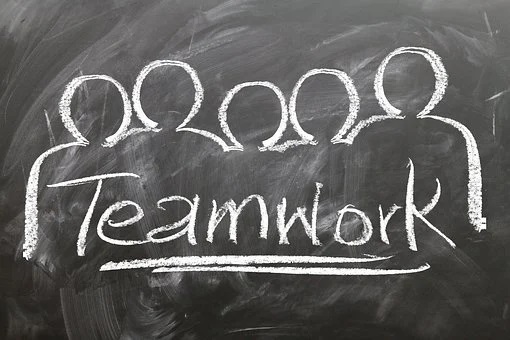I think I could walk into any healthcare facility and after sitting through one administrative meeting, accurately describe the organization’s culture. Not the ideal one described in the mission statement, marketing campaign or the new employee orientation, but the real way the place operates.
Your Slip is Showing
What can be learned about an organization from how they conduct meetings? Here are a few things:
- Seating – who sits where and why. Does the chair take a position of power at the head of the table or among the participants? Are seats assigned or chosen according to position-either formally or through an informal mechanism?
- Agenda -formal/informal. Is the meeting structured and is the stated agenda enforced? Does agenda-creep occur? How many rabbits are chased down bunny trails?
- Authority and participation. How are authority relationships demonstrated? Is there a patriarchal or autocratic style in evidence? Who participates in discussion and how is disagreement handled? Who prevails and why? Is consensus required?
- Focus/structure. Does the meeting start/end as scheduled? Are participants focused meeting or are other activities going on simultaneously (email, reading other work, etc.) Are minutes being taken? Is the meeting effectiveness assessed at end of meeting?
- Amenities. Are refreshments provided? Do participants come and go during meeting? Frequent bathroom breaks? Meeting held in offsite location?
While the cultural revelations are fascinating, let’s focus on those that might apply to supporting high performance.
High Performance Disconnect
Let’s assume that your organization has embraced the high performance model. You have embraced being the low-cost high-quality provider by becoming better, cheaper and faster at everything you do. Productivity standards are in place for all departments and everyone is pursuing improvements.
And then there are meetings…
First of all, if you are truly a high performance organization you do not view meetings as the reason for your job but an interruption of it! Someone once said that a committee doesn’t necessarily make the right decision, they make the safe one!
Think about it– the larger the group, the more constituencies represented. Therefore, any decision that the group makes is acceptable to the represented population. Since group meetings are often necessary, the question becomes: does your meeting structure support high performance or show you to be hypocrites?
What employees see
Your workforce has been charged with reducing costs and becoming more productive. No matter how we couch it, it means doing more with less. Then they see management on their way to another meeting.
- Participants gather in the meeting room and promptly focus on their mobile devices while they wait the late arrival of the chair who had to take a last-minute very important call.
- The Dietary cart arrives with the meeting refreshments. Donuts and danish before 10 am, lunch between 10-1 pm, and fruit trays after that.
- Two reams of paper are consumed providing minutes of the previous meeting and various handouts for each participant.
- An Administrative Assistant is poised to record minutes of the meeting for future duplication and distribution.
- The meeting was scheduled from 9-10 but at 11:30, the group is not even halfway through the agenda. So a call goes out to the Dietary Department to prepare and send up lunch for the meeting.
Sound familiar? Your staff conclude that “better, cheaper, and faster” is something that only applies to them. Evidently, it does not apply to management!
Doing meetings right
Meetings should not be an interruption of “better, cheaper, faster” but should be a way to reinforce the message. You can demonstrate management’s commitment by making the following changes:
- Stop the catering! Your staff wonder why they have to pay for all their food, and yet higher-paid managers get food provided to them. Our rule was that catered meetings only occurred when there were participants from outside the organization. For all other meetings, participants were free to go purchase food in the cafeteria and bring it to the meeting. The organization will save tremendous costs, not only in food, but in labor costs for the setup and take-down of catered events. You will also eliminate the fairness issue with staff.
- Start on time. If the start time is strictly enforced, it is amazing how the group can stay on track. I worked with a CFO who locked the meeting room door at the meeting start time. If you were late, you didn’t get in. Period! When it was no longer accepted, no other activity or phone call delayed the meeting. (If something more important was occurring for a participant, the meeting started without that person –including the CEO.)
- End on time. Meetings generally go over because of agenda-creep. This is where an item on the agenda triggers someone to go down a trail not directly related to agenda item. This is easy to do. When you know that the meeting will end at 11:00AM –regardless of whether anything has been decided– it will alter behavior.
- Eliminate printed agendas. Unless required by law or regulation for certain meetings, stop the printing and circulating of agendas. What did we use? An agenda printed on newsprint pad. I was the keeper of the agenda and at the end of the meeting I kept it in my office until the next meeting where I would repost it on the wall. When it became too messy to read, I made a new one.
- Eliminate minutes. Again, minutes are required for some meetings-usually board, medical staff, or quality concerns. However, most committee or admin meetings could do without minutes. What minutes did we use? The newsprint agenda that was saved and reposted each meeting served as our minutes. Not only will you save a few trees (or electronic bytes), but you free an administrative employee from this needless task.
Easy hard solution
Nothing I have proposed is a radical thought and most are easy to implement technically. However, the will to do so is where it gets difficult.
For, example, stopping catering is an easy step to implement. Ending the mostly useless activity of minutes is easy to implement. To me the most difficult is insuring that the meeting ends when it is supposed to end.
The number #1 time waster, is that the group pursues bunny trails not strictly related to the agenda. When we had a CEO introduce the concept that our weekly admin meetings would go no longer than 60 minutes, we didn’t think this could be accomplished.
Each agenda item was given a time limit. A timekeeper warned us when our time was about up for that item. No problem, we had done this before and we still went over our designated time. We were sure that additional time would be added on to the meeting.
Here was the difference: The CEO watched us go over the designated time for each agenda item. After one hour, he stated that the meeting was over. When we protested that we had only covered 3 of the 10 items on the agenda, he replied that he was aware of that fact. He stated that the meeting was scheduled for one hour and that was not negotiable. It was our choice to spend that time on 3 items rather than the 10.
Lose the battle, win the war
We left the meeting without accomplishing much of anything. However, we learned that he was dead-serious that the meeting would go no longer than 1 hour.
Within two meetings, we were focusing on the agenda items and reaching decisions on all of them. Extraneous discussions were either future agenda items, or taken offline.
The C Suite, which previously had spent most of the morning in this all important meeting, were now in and out within 60 minutes –and accomplishing more!
When we learned that our nonproductive behavior would no longer be enabled, we chose to change behavior. In order to change behavior, the CEO had to be willing to have an unproductive meeting or two!
Set an example. The higher you are in an organization, the more time you are spending in meetings. The way they are conducted either reinforces or makes a lie of “better, cheaper, faster”!






One thought on “Meetings – Revealing Your Real Culture”
Good and Valuable Info!